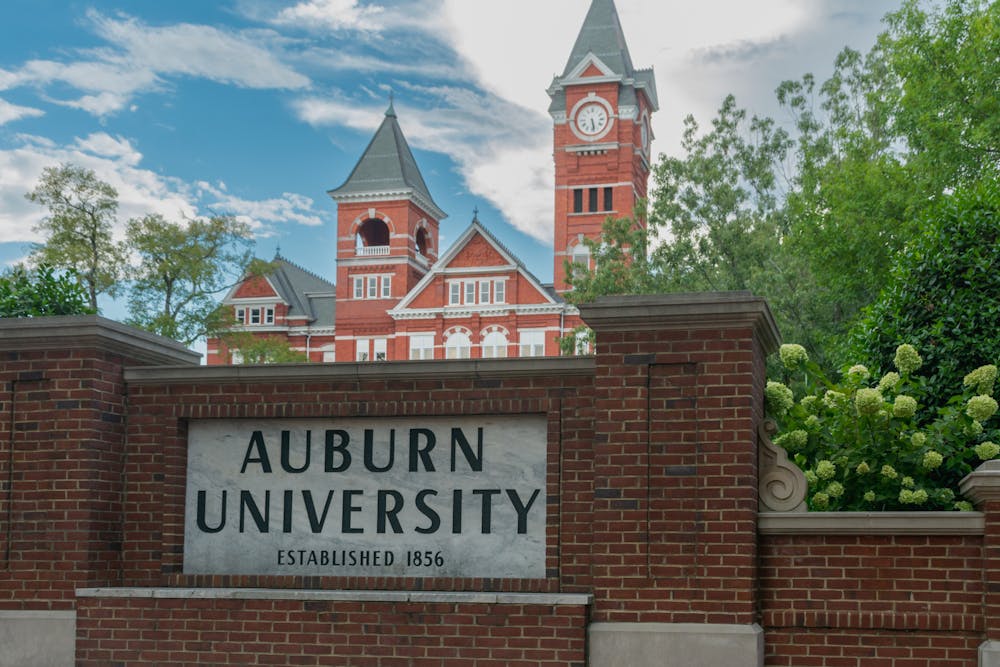Words carry meaning. We all know this; but we don’t often consider it, especially when words become unquestionable definitions instead of a means for considering truths.
Even though Auburn was founded in 1856, the name Auburn University was not even used until about 60 years ago. The university has actually claimed four different names throughout its history, and each of these conveys core, organizational values of the respective era.
EAST ALABAMA MALE COLLEGE — This was the name associated with the university at its founding in 1856. At the time, only men attended, and it was a very simple organization. The city of Auburn had been founded 20 years prior, and the name reflected a locational education operation.
It’s always fair to question the motives of an institution in Civil War era Alabama. In 1856, the organization we know and love today as Auburn University was heavily impacted by societal norms: namely racism, sexism and degenerate ideals of excellence.
We shouldn’t blot this part of our history out, but we should tread lightly when reminiscing and displaying pride in it. Even if we assume its values were fearless, true and completely pure, it only benefitted a certain demographic.
Women were not permitted to attend the university until 1890, and the first Black student did not set foot on campus until 1964 — over 100 years after the university’s establishment.
There were certainly good aspects of EAMC, but it’s probably good that the university has reached new depths and branded itself around better ideas.
AGRICULTURAL AND MECHANICAL COLLEGE OF ALABAMA — After being in business for 16 years, the university changed its name. In 1872 under the Morrill Act, it became classified as a land grant university — the first land grand university in the South.
A land grant university is one that focuses heavily on the relationship between the state and its residents. The university designates resources for state residents. As the state residents partake in the resources, a symbiotic relationship is formed because they are more equipped and obligated to serve their state.
With this progression, the university became associated with the state of Alabama. The new name reflected its unique purpose, location and specialties.
Historical context places it around the Reconstructionist era. It makes sense why the two most important — and two only — majors were agriculture and mechanics. Those were pretty much the only things the state cared about, especially in a time of rebuilding itself from the Civil War’s effects.
The student body was still pretty exclusionary, but the educational values were starting to open up and reflect a desire for the greater good. Including “agricultural and mechanical” in the title reflects and conveys the importance of these two topics, especially to a university benefitting the state of Alabama.
This name might reflect the earliest values of altruism. Instead of being the East Alabama Male College, a name that only identifies the self, the university defined itself as an organization with capability and desire for service.
ALABAMA POLYTECHNIC INSTITUTE — Then 1899, the name changed once again. By now, women were allowed to attend, and there were more majors.
Including the word “polytechnic” brought a new sense of professionalism and grandeur to the scene. While not as service-oriented as the previous name, this one conveys a message of variety and larger scope. The university was taking on greater roles and having greater influence.
It was in this era that the creed was written.
Anyone affiliated with the university knows of the creed or has, at the very least, experienced the conditions of it. The values Auburn University uses to define itself, hold itself accountable and inspire itself were all written in the API era.
These values are intrinsic to the university, and it is one of the greatest acts of identification. Hard work, education, honesty and truthfulness, a sound mind, obedience, human sympathy and freedom — these abundant values are what the university sought after and conveyed through the name API.
AUBURN UNIVERSITY — In 1960, the journey was completed. We became Auburn.
It may seem much simpler than each of its predecessors, but it conveys so much in its one-word signifier.
Auburn is the town. It’s the charming, historical coming-together of people of all ages and backgrounds to rally around something wholesome, unifying and true.
Auburn is also the university, the creed, the excellent academics, spirited sports efforts, timeless tradition and diverse group of people — the Auburn Family — who hold it dear.
“Auburn” holds so much meaning, especially to those who have experienced what it means to live here. The simplicity is profound, modest and self-sufficient. It needs no explanation, yet it invites anyone to come experience its loveliness.
The Loveliest Village on the Plains produced one of the greatest and most beloved academic institutions in the country (and with only three overhauls of rebranding): Auburn University.
Do you like this story? The Plainsman doesn't accept money from tuition or student fees, and we don't charge a subscription fee. But you can donate to support The Plainsman.

Sami Grace Donnelly, senior in English literature, began writing for the Plainsman in the fall of 2021. She has served as a columnist, writer abroad, Opinion Editor, managing editor and is now Editor-in-Chief of the Plainsman.





